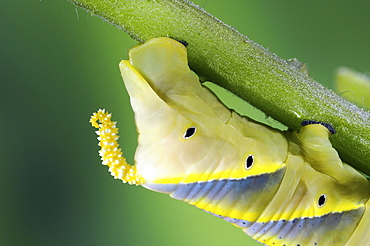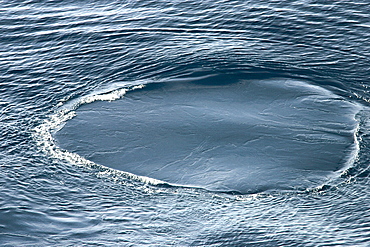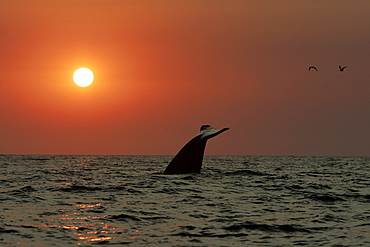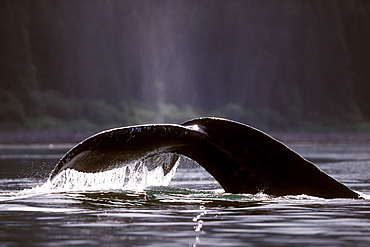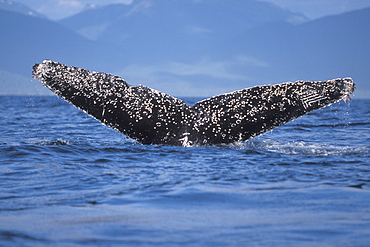Recent searches
Loading...
1116-52853 - Close-up of African bush elephant (Loxodonta africana) hind legs and tail, Segera, Laikipia, Kenya
860-291223 - Portrait (Pavo cristatus) of a peacock on the background of his tail. Close-up. Sri Lanka. Yala National park
860-291226 - Portrait (Pavo cristatus) of a peacock on the background of his tail. Close-up. Sri Lanka. Yala National park
860-291096 - Tail of Blue whale diving (Balaenoptera musculus) Reaching a maximum confirmed length of 30 meters and weighing up to 200 tons, it is the largest animal known to have ever existed. Azores, Portugal, Atlantic Ocean.
1116-52637 - Littly Girl In Party Hat, Holding A Magnifying Glass
1116-51994 - Siberian tiger (Panthera tigris altaica) running in snow; Czech Republic
1116-51987 - Siberian tiger (Panthera tigris altaica) in winter; Czech Republic
1116-51984 - Siberian tiger (Panthera tigris altaica) walking in the snow in winter; Czech Republic
1350-16 - Comet Holmes, 17P, taken Nov 1, 2007 on excellent night. Taken with A&M 105mm apo refractor at f/5 with Borg 0.85x compressor/field flattener on SkyWatcher HEQ5 mount. Canon 20Da camera at ISO400. Composite of 4 min, 2min, 1min, 30sec, 15sec, and 7 sec exposures, each exposure being a stack of 3 to 4 identical exposures. Registered and stacked in Photoshop (HDR mode did not produce usable result, so manually composited with sucessively smaller masks to reveal short exposure content around nucleus. Contrast exaggerated with Curves to bring out very faint tail structure. North up, so tail to the S and SW.Nucleus is dot at upper left of inner coma, other star in inner coma at right is a field star
832-388235 - Aircraft tail units of several Airbus A380 of the airline Emirates, aircraft lined up at the terminal, Dubai Airport, Dubai, United Arab Emirates, Asia
1116-47939 - Close-up of plains zebra (Equus quagga) turning head around to look at camera, Maasai Mara National Reserve, Kenya
1116-47905 - Close-up of tail of cheetah (Acinonyx jubatus) in grass, Maasai Mara National Reserve, Kenya
1174-7978 - A mother leopard, Panthera pardus, and its cub stand behind a log, tail up, direct gaze, Londolozi Game Reserve, Greater Kruger National Park, South Africa
1116-46361 - Close Up Of Shrimp Filled Dumplings, Seoul, South Korea
1174-4979 - A leopard, Panthera pardus, walks across a dirt road, looking away, tail curled up, Londolozi Game Reserve, Sabi Sands, Greater Kruger National Park, South Africa
1174-5207 - A silhouette of a giraffe, Giraffa camelopardalis, knees bowed inwards, tail up in air, Londolozi Game Reserve, Sabi Sands, Greater Kruger National Park, South Africa
1174-5107 - A leopard, Panthera pardus, stands on a sand road, alert, tail curled up, face in sunlight, greenery background, Londolozi Game Reserve, Sabi Sands, Greater Kruger National Park, South Africa
1174-5004 - A leopard's tail, Panthera pardus, curled up, dark rosettes on fur, in black and white, Londolozi Game Reserve, Sabi Sands, Greater Kruger National Park, South Africa
1174-4992 - A flock of white-fronted bee-eaters, Merops bullockoides, lie on sand while one flies down, wings up and tail spread, Londolozi Game Reserve, Sabi Sands, Greater Kruger National Park, South Africa
1174-4962 - A lioness, Panthera leo, runs away with its tail up, wide eyed and mouth open as four spotted hyena, Crocuta crocuta, chase after it in dry yellow grass, Londolozi Game Reserve, Sabi Sands, Greater Kruger National Park, South Africa
1112-2945 - Adult sperm whale (Physeter macrocephalus) flukes-up dive near Isla San Pedro Martir, Baja California, Mexico, North America
1112-2532 - Adult humpback whale (Megaptera novaeangliae) flukes-up dive off the west coast of Spitsbergen, Svalbard, Arctic, Norway, Scandinavia, Europe
832-372127 - African elephants (Loxodonta africana), bottoms, Addo National Park, South Africa
832-367906 - Asian elephant (Elephas maximus), hindquarters and tail, found in Asia, captive, Germany, Europe
832-368881 - Coiled tail of a Panther Chameleon (Furcifer pardalis), Ambilobe-Ambilorama colour variation, Ambilobe, Madagascar, Africa, Indian Ocean
832-367740 - White Rhinoceros or Square-lipped rhinoceros (Ceratotherium simum), detail view of rear and tail, African species, captive, Germany, Europe
832-367790 - American Alligator or Pike-headed Alligator (Alligator mississippiensis), tail detail, Everglades National Park, Florida, USA
1112-2043 - Humpback whale (Megaptera novaeangliae) flukes-up dive in Dallmann Bay, Antarctica, Polar Regions
1112-2042 - Humpback whale (Megaptera novaeangliae), flukes-up dive in the Enterprise Islands, Antarctica, Polar Regions
1112-2040 - Humpback whale (Megaptera novaeangliae), flukes-up dive, English Strait, South Shetland Islands, Antarctica, Polar Regions
1112-1987 - Humpback whale (Megaptera novaeangliae), flukes-up dive near whale watchers in the Enterprise Islands, Antarctica, Polar Regions
832-343113 - Sun on the water of the Krumm Lake, North Tyrol, Austria, Europe
832-293350 - Chapel, Christmas tree near Elmau, Upper Bavaria, Bavaria, Germany, Europe
832-293349 - Chapel, Christmas tree near Elmau, Upper Bavaria, Bavaria, Germany, Europe
832-293348 - Chapel, Christmas tree near Elmau, Upper Bavaria, Bavaria, Germany, Europe
764-4411 - Leopard (Panthera pardus) walking through dry grass with his tail up, Kruger National Park, South Africa, Africa
832-239193 - 24-hour race at the Nurburgring race track, accident emergency repair with duct tape, Nurburgring, Rhineland-Palatinate, Germany, Europe
764-3978 - Leopard (Panthera pardus) walking through dry grass with his tail up, Kruger National Park, South Africa, Africa
869-1275 - African elephant elephant tail skin with wrinkles backview detail close-up
832-176615 - Illuminated Christmas star in front of a stained glass window
832-139378 - Ra II, the famous raft by Thor Heyerdahl, Kon-Tiki Museum, Oslo, Norway, Europe
832-132206 - Snow on old wooden pier, lake Chiemsee, Chiemgau, Upper Bavaria, Germany, Europe
832-126688 - Frozen oxbow lake of the Elbe river near Klieken, Saxony-Anhalt, Germany, Europe
832-121473 - Winter services scattering salt on the road, ice hazard through water used for for firefighting, Kirchheim unter Teck, Baden-Wuerttemberg, Germany, Europe
832-105675 - Old wooden jetty covered in early morning frost, lake Chiemsee, Upper Bavaria, Germany, Europe
1116-31107 - Hawaii, Maui, Lahaina, A photograher on a whale watching boat out of got a close up look at the tail of a humpback whale (Megaptera novaeangliae).
1116-39005 - Hawaii, Close-up Humpback Whale (Megaptera novaeangliae) fluke D1969
1116-35760 - Hawaii, Humpback Whale (Megaptera novaeangliae), [For use up to 13x20 only]
1116-34939 - Atlantic Spotted Dolphin, Stenella plagiodon, close-up
1116-38995 - Hawaii, Close-up side view of Humpback Whale (Megaptera novaeangliae) breaching, Pacific Ocean D1951
1116-31112 - Hawaii, Maui, Lahaina, A photograher on a whale watching boat out of got a close up look at the tail of a humpback whale (Megaptera novaeangliae).
1116-35125 - Close-up of a single red Queen Protea on plant
1116-31109 - Hawaii, Maui, Lahaina, A photograher on a whale watching boat out of got a close up look at the tail of a humpback whale (Megaptera novaeangliae).
1112-386 - Sperm whale (Physeter macrocephalus) flukes up dive, Isla San Pedro Martir, Gulf of California (Sea of Cortez), Baja California Norte, Mexico, North America
1112-389 - Sperm whale (Physeter macrocephalus) flukes up dive, Isla San Pedro Martir, Gulf of California (Sea of Cortez), Baja California Norte, Mexico, North America
857-52148 - Tail of a horse riding in the warm up ring. (motion blur)
1198-75 - Deaths-head hawkmoth (acherontia atropos) final instar larva or caterpillar, showing close-up of tail or horn
1198-732 - Brown hairstreak butterfly (thecla betulae) close,up of rear wing showing tail, oxfordshire, uk
1198-557 - Veiled chameleon (chamaeleo calyptratus) close-up of curled-up tail, ground dwelling desert chameleon native to yemen
1022-89 - common seadragon (phyllopteryx taeniolatus) voracious hunters, camouflage looking like a piece of floating weed, unique to Australia, wild, dusk, shore diving, sand, marine park, metropolitan, Perth city, Indian Ocean, cool temperate waters of Western Australia. MORE INFO: amongst kelp, female seadragon deposits up to 150 eggs into the spongy, soft tissue under the tail of the male seadragon. Once fertilised, eggs incubate about 8 weeks. On hatching, miniature seadragons are independent and will start eating almost immediately.
908-25 - Basking Shark (Cetorhinus maximus) Close up of tail. Cornwall, UK
Restricted resolution (Please contact us). (RR)
1022-90 - common seadragon (phyllopteryx taeniolatus) voracious hunters, camouflage looking like a piece of floating weed, unique to Australia, wild, dusk, shore diving, sand, marine park, metropolitan, Perth city, Indian Ocean, cool temperate waters of Western Australia. MORE INFO: blue water, female seadragon deposits up to 150 eggs into the spongy, soft tissue under the tail of the male seadragon. Once fertilised, eggs incubate about 8 weeks. On hatching, miniature seadragons are independent and will start eating almost immediately.
939-9 - Humpback whale (Megaptera novaeangliae) fluking up to dive. Alaska
1022-92 - common seadragon (phyllopteryx taeniolatus) voracious hunters, camouflage looking like a piece of floating weed, unique to Australia, wild, dusk, shore diving, sand, marine park, metropolitan, Perth city, Indian Ocean, cool temperate waters of Western Australia. MORE INFO: amongst kelp, female seadragon deposits up to 150 eggs into the spongy, soft tissue under the tail of the male seadragon. Once fertilised, eggs incubate about 8 weeks. On hatching, miniature seadragons are independent and will start eating almost immediately.
1022-77 - common seadragon (phyllopteryx taeniolatus) voracious hunters, camouflage looking like a piece of floating weed, unique to Australia, wild, dusk, shore diving, sand, marine park, metropolitan, Perth city, Indian Ocean, cool temperate waters of Western Australia. MORE INFO: amongst kelp, female seadragon deposits up to 150 eggs into the spongy, soft tissue under the tail of the male seadragon. Once fertilised, eggs incubate about 8 weeks. On hatching, miniature seadragons are independent and will start eating almost immediately.
1074-31 - Humpback whale (Megaptera novaeangliae) fluking up for a deep dive with the midnight sun and a whale-watching boat behindt. Husavik, Iceland
1074-4 - Humpback whale (Megaptera novaeangliae) fluking up for a deep dive. Husavik, Iceland
1074-5 - Humpback whale (Megaptera novaeangliae) fluking up for a deep dive with the midnight sun setting behind. Near Husavik on the north coast of Iceland
1074-6 - Humpback whale (Megaptera novaeangliae) fluking up for a deep dive in the midnight sun, near Husavik on the north coast of Iceland
1074-3 - Humpback whale (Megaptera novaeangliae) fluking up for a deep dive in fjordland, with snow behind on the Mountains of Kinn. Husavik, Iceland
1036-120 - Humpback whale fluking up to dive (Megaptera novaeanglia), West of Iceland
1036-119 - Grey whale 'fluking up' before deep dive (Eschrichtius robustus) San Ignacio, Baja California
1036-262 - Humpback whale (Megaptera novaeangliae) fluking up to dive in full view of whale watchers on North Sailing boat. HusavÌk, Iceland
1036-112 - Grey whale 'fluking up' before a deep dive (Eschrichtius robustus) Pacific, San Ignacio lagoon, Baja-California, Mexico
1036-138 - Fin whale fluke print, or 'foot print', caused by the powerful up stroke of a whale's tail while it is still near the surface (Balaenoptera physalus) . Bay of Biscay, SW (RR)
931-137 - Blue whale (balaenoptera musculus). The tail of a blue whale can be up to 20ft across. Gulf of California.
931-217 - Blue whale (balaenoptera musculus) Gulf of California.Looking up at the barnacles on the tail of a blue whale.
969-134 - Sperm whale fluking up to dive (Physeter macrocephalus) Azores, Atlantic Ocean (RR)
969-194 - Blue whale fluking up to dive (Balaenoptera musculus) Azores, Atlantic Ocean (RR)
979-646 - Adult humpback whale (Megaptera novaeangliae) fluke-up dive in Frederick Sound, Southeast Alaska, USA. Pacific Ocean.
979-5074 - A very rare sighting of an adult blue Whale (Balaenoptera musculus) fluke-up dive off the northwestern side of Spitsbergen Island in the Svalbard Archipelago, Barents Sea, Norway
979-2827 - Adult California Gray Whale (Eschrichtius robustus) fluke-up dive in Magdalena Bay, Baja California Sur, Mexico
979-362 - Adult Sperm Whale (Physeter macrocephalus) fluke-up dive at sunset in the mid-riff region of the Gulf of California (Sea of Cortez), Mexico.
(Restricted Resolution - pls contact us)
979-822 - Mother and calf Blue Whale (Balaenoptera musculus) fluke-up dive in the Gulf of California (Sea of Cortez), Mexico.
979-830 - Blue Whale (Balaenoptera musculus) fluke-up dive at sunset in the offshore waters of Santa Monica Bay, California, USA.
979-2914 - Adult humpback whale (Megaptera novaeangliae) fluke-up dive in Chatham Strait, southeast Alaska, USA.
979-9594 - Humpback whale (Megaptera novaeangliae) fluke-up dive in the AuAu Channel between the islands of Maui and Lanai, Hawaii, USA
979-840 - Adult Southern Right Whale (Eubalaena australis) fluke-up dive in Golfo Nuevo, Patagonia, Argentina.
979-7532 - Humpback whale (Megaptera novaeangliae) flukes-up dive near the Antarctic Peninsula, Antarctica, Southern Ocean
979-642 - Adult Humpback Whale (Megaptera novaeangliae) fluke-up dive in Southeast Alaska, USA. Pacific Ocean.
979-823 - Adult Blue Whale (Balaenoptera musculus) fluke-up dive - note the damage to the right fluke - in the Gulf of California (Sea of Cortez), Mexico.
979-8011 - A very rare sighting of an adult blue Whale (Balaenoptera musculus) flukes-up dive off the northwestern side of Spitsbergen Island in the Svalbard Archipelago, Barents Sea, Norway
979-8096 - Adult humpback whale (Megaptera novaeangliae) flukes-up dive off the continental shelf west of Spitsbergen in the Barents Sea, Norway
979-5877 - Short-finned pilot whale (Globicephala macrorhynchus) fluke-up dive off Isla San Pedro Martir, Gulf of California (Sea of Cortez), Baja California Norte, Mexico
979-558 - Adult Humpback Whale (Megaptera novaeangliae) fluke-up dive in Icy Strait, Southeast Alaska, USA.
979-688 - Adult humpback whale (Megaptera novaeangliae) fluke-up dive near the Antarctic Peninsula.
979-6710 - Humpback whales (Megaptera novaeangliae) fluke-up dive in the misty waters along the west side of Chatham Strait in Southeast Alaska, USA
979-543 - Adult Humpback Whale (Megaptera novaeangliae) fluke-up dive in Frederick Sound, Southeast Alaska, USA. Pacific Ocean.
979-514 - Humpback Whale (Megaptera novaeangliae) fluke-up dive (note the Orca tooth rake marks on the right side of the tail) in Icy Strait, Southeast Alaska, USA.

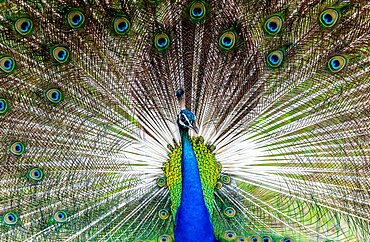
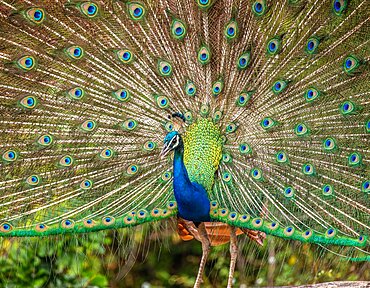
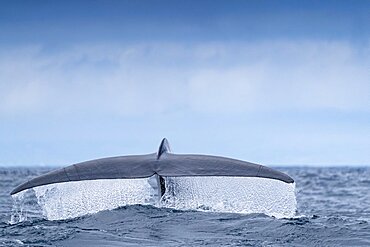


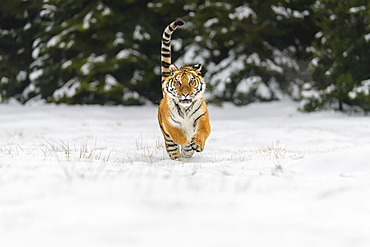












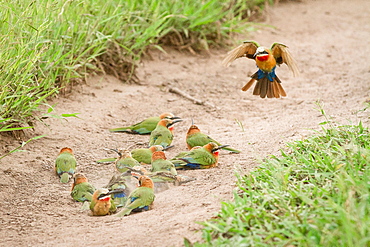

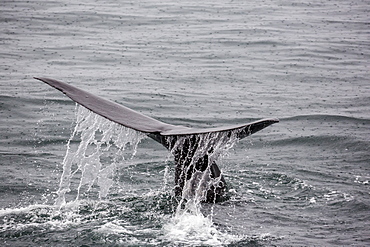




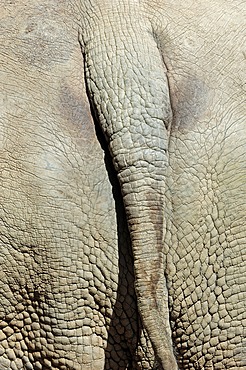
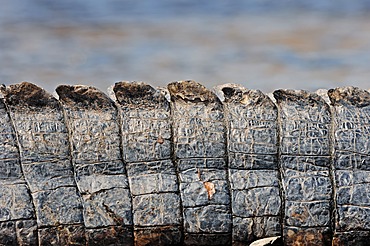



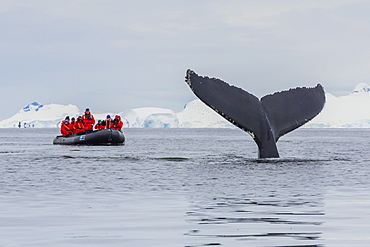
















![Hawaii, Humpback Whale (Megaptera novaeangliae), [For use up to 13x20 only]<br />1116-35760 Hawaii, Humpback Whale (Megaptera novaeangliae), [For use up to 13x20 only]](https://images.robertharding.com/zoom/RM/RH/HORIZONTAL/1116-35760.jpg)








